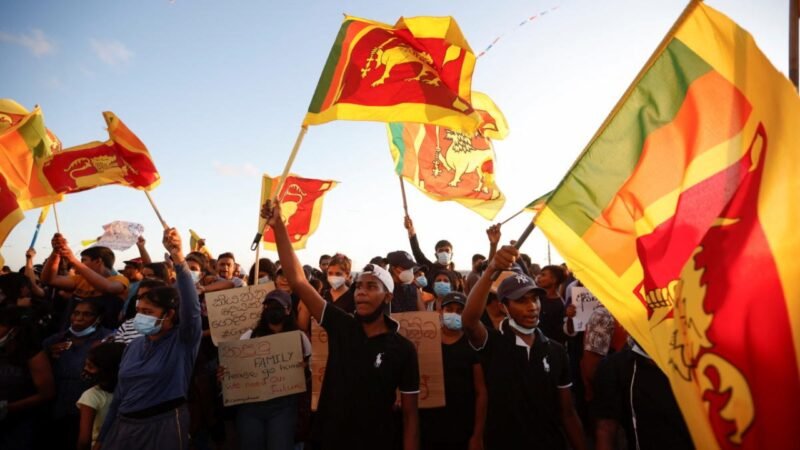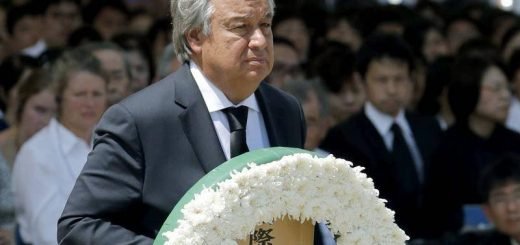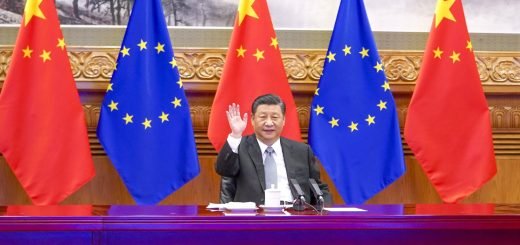Analyzing the unrest in Sri Lanka

“Every religion contains, in varying degrees, elements of the soft and the hard. For the sake of world peace, dialogue within religions and among them must strengthen the softer aspects”
“Every religion contains, in varying degrees, elements of the soft and the hard. For the sake of world peace, dialogue within religions and among them must strengthen the softer aspects”
– Johan Galtung.
The undying chaos and the 2022 economic crisis
Sri Lanka, the island nation that sports the blemishes of civil war, conflicts and a constant state of chaos has the deadliest bloodshed of 26 years, etched into its memory. The nation has been struck down repeatedly, due to religious and ethnic tensions. It all started when the British transferred the power status to the minority Tamils. The violent maltreatment that ensued after the Sri Lankan independence in 1948 was just the beginning. The notorious anti-Tamil Pogroms of 1956, 1958, 1977, 1981 and 1983 as well as several discriminatory practices by the angered Sinhalese, massacred a huge number of the Tamil population. These activities entailed the formation of the separatist group LTTE and the demands of a separate Tamil Eelam. Be it the 1987 grenade attack at the Sri Lankan Parliament or the 2006 Digapathana bombing, the LTTE had shaken the nation to its core. War crimes that included rapes, tortures and gruesome deaths of civilians stained the livelihoods of several people. 17th May 2009 marked the end of the Tamil Tigers as their “guns had been silenced” successfully by the Sri Lankan military.
As if this was not enough for the citizens, the nation has been plunged into severe trauma in 2022. Where shortages in food, fuel, medicine, and basic amenities necessary for survival have become the order of the day, chaotic protests and violence have yet again marred the social well-being of the state. The wrath of the enraged citizens on former president Gotabaya Rajapaksa’s residence was met with tear gas and water canons and other oppressive measures like curfews and social media website bans. An economic crisis brought on by a political crisis has led the Sri Lankans to a general crisis. Inflation, a decline in foreign currency reserves, shortage of resources, debts; everything that can go wrong with a country, have fallen hard on Sri Lanka’s citizens. Severe electricity and power shortages, the worst in seven decades, seemed to have enhanced the shadows cast upon Sri Lanka due to faulty administerial and government practices.
The checkered history of the nation continues to haunt its present. The 2019 easter bombings whence 3 hotels and 3 churches were targeted, in different cities by suicide bombers, killing 45 foreign nationals as well as Sri Lankan citizens established one thing- the conditions of conflict in Sri Lanka are yet to be dealt with. Religious tensions sparking riots dismantled the social apparatus in Sri Lanka where social media websites like Facebook seemed to have played a major role.
The economic crisis that worsened the conflicts in Sri Lanka
In the 2019 presidential elections, the former president of Sri Lanka, Gotabaya Rajapaksa came to power. With economic revamp as one of the main targets, the election campaign promises glowed, envisioning a better Sri Lanka. In normal conditions, a reduction of taxes for increased consumption would work for an economy. However, this was not the case for Sri Lanka as economic reforms of any kind always need the right planning, but most importantly the correct timing. The reduction of VAT was introduced from 1st December 2019. This change was done just before the COVID-19 pandemic. Lockdowns became the enemy of economic propaganda. With the 100% organic farming policy in lieu of cutting down government spending for fertilizers, farming and agricultural aspects were severely affected. The production went down, and Sri Lanka had to import rice, something which it had never done before. The prices for the staple food crops had gone higher along with a decline in foreign currency reserves which saw Sri Lanka in shambles, as it couldn’t purchase the necessities required for its citizens. The unnecessary infrastructure spending by the government whence some of which even resulted as duds, at such a sensitive time seemed to reach the brim of tolerance for the nation.
Tourism was an essential contributor to the Sri Lankan economy. 2018 was the golden year for this sector in Sri Lanka, whence about 12 to 13 % of Sri Lankan GDP was backed by Tourism. However, this important development was nosedived during the 2019 Easter Day Bombings. Increased spending where a negative balance of trade served as a catalyst, to drown the national economic system. The public debt of Sri Lanka was already soaring off the charts in 2019. It rounded up for about 94% of the GDP. Fast forward to 2021 it was 119%. In February 2022, Sri Lanka possessed 2.3 billion dollars’ worth of foreign currency reserves witnessing a sharp fall of 70% since January 2020. To top it off, debt- accumulation to an unmanageable amount witnessed the Government defaulting on debt repayments.
Optimism to bring peace amidst the worst economic crisis in Sri Lanka-
Foul play in bureaucracy and administration along with family politics which seemed to pay little or no realistic attention in addressing the conflicts disfiguring the social ambience of Sri Lanka led to the collapse of the stability of the nation.
The family business-led situational crisis stripped Gotabaya Rajapaksa off his title whence he had refused to resign earlier. The current president of Sri Lanka Ranil Wickremesinghe appointed Dinesh Gunawardena as the Prime Minister to replace the ousted Rajapaksas.
“Never let a good crisis go to waste” is the best maxim that Sri Lanka can apply in the current context. Statements from Ranil Wickremesinghe in the parliament confirmed the declined status of the nation, ‘from a developing country to a bankrupt one’. International monetary institutions like the IMF and World Bank need reassurance in order to extend bailout packages to Sri Lanka. Debt restructuring programmes, focus on new sectors of Logistics and energy and planned fiscal policies, stable enough to hold the attention of these institutions are some of the measures that the government is striving for. Amidst these developments, the sweeping tax cut policies that brought the Rajapaksas to power in the 2019 elections are being reversed. Though there has been a general acceptance that this policy will not be able to bear visible fruits in the short term.
With Sri Lankans trying to find employment abroad, the government has also been encouraging public sector officials for the same. Discussions to introduce formal channels for incentivizing remittances are some of the many steps that the Government is trying to take to bring down the intensity of the crisis at home.
This economic crisis is a second severe blow, especially to Tamil-populated regions like Mullaitivu in Sri Lanka which have already been wrecked by the ethnic cleansing attempts during the LTTE insurgency years. 31% of the adult respondents of a Save the Children survey accepted that they had been facing food shortages in order to provide meals for their children only. There have been claims that the economic crisis has just driven these poorer factions of Sri Lanka especially the war-maimed ones to an even worse condition. Welfare efforts from the social empowerment ministry like monthly cash transfers are some of the targets being fulfilled by the government. Aid for the food crisis in the form of loans from the Asian Development Bank are also trying to maintain the flicker of hope for the battered Sri Lankans.
The most important strategic position can be gained when Sri Lanka can figure out the simplest of all the legitimate goals and then try to reassure the citizens. The government apparatus will never be able to execute the policies well if the citizens are constantly in a state of unrest, The durable macroeconomic reforms demanded by international institutions are required to gain the trust and confidence back. The flames of structural violence and injustice to the citizens as well as the economy of Sri Lanka will not heal in a short time, but the development towards a sustainable economy and society can only be envisaged with proper ventures exempt from any sort of corruption.
Keywords- economic crisis, governance, humanitarian aid, conflict.
References-
- Jeevan Ravindran, The Wire- ‘From Bad to Worse’ : Sri Lanka’s Economic Crisis Pushes War Shattered Tamils to the Brink, September 16, 2022.
- Talal Rafi and Sirimal Abeyratne, The Diplomat- How Sri Lanka Can Overcome Its Economic Crisis, August 26, 2022
How Sri Lanka Can Overcome Its Economic Crisis – The Diplomat
- Deutsche Welle, The Indian Express- How Can Sri Lanka recover from economic collapse, July 24, 2022
How can Sri Lanka recover from economic collapse? | World News,The Indian Express


















